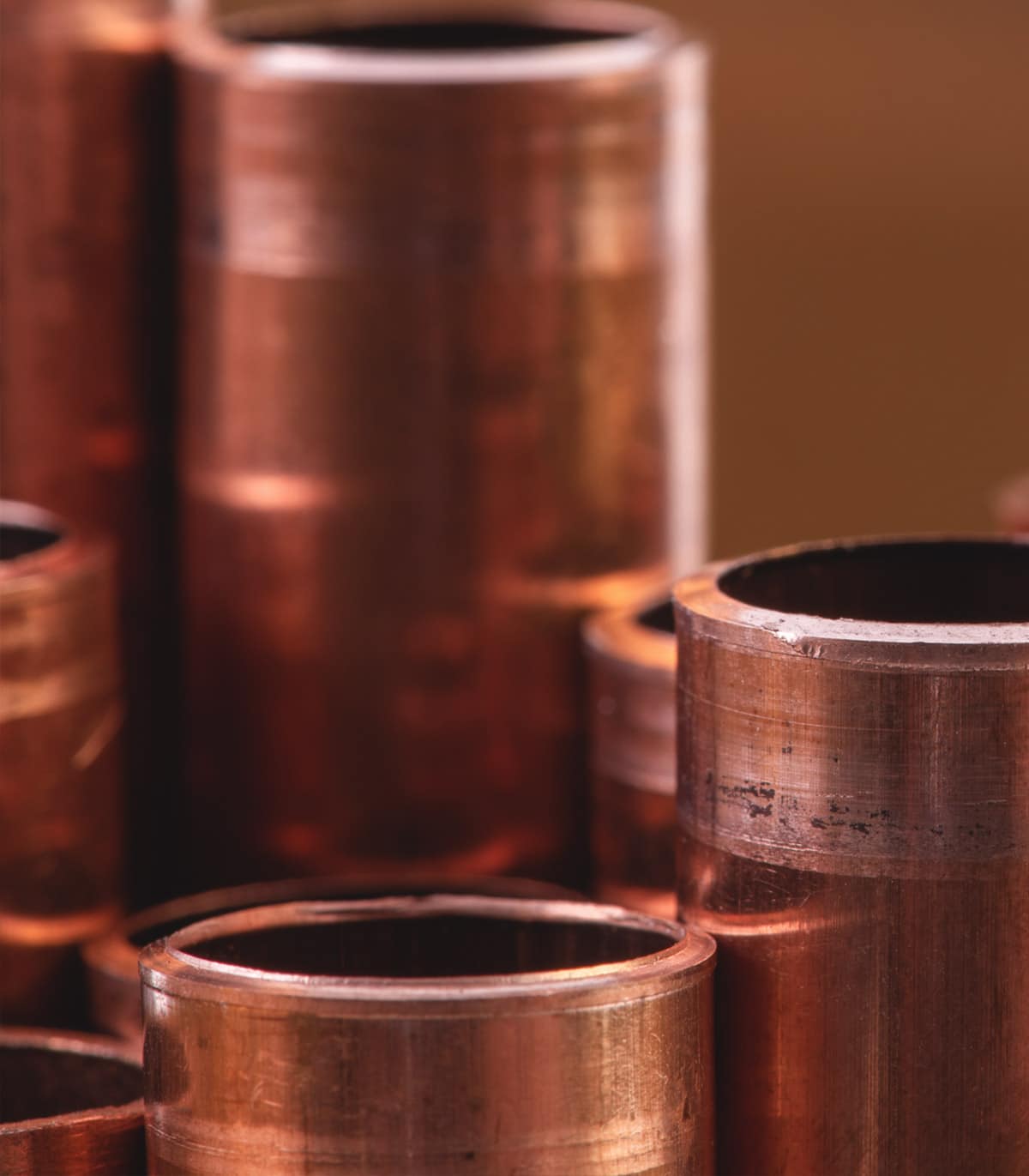From Art to Performance: The Many Applications of Special Copper Products
From Art to Performance: The Many Applications of Special Copper Products
Blog Article
Just How Copper Products Add To Lasting Practices in Numerous Markets
In renewable energy systems, for example, copper enhances the capability of solar and wind innovations, while its application in building lessens waste via long life. As sectors look for to embrace even more sustainable practices, the duty of copper could prove crucial in attaining environmental goals.
Copper in Renewable Power
Copper plays a crucial role in the advancement of renewable energy technologies, functioning as an essential conductor in different applications. Its phenomenal electrical conductivity and resistance to deterioration make it an ideal material for electric wiring, which is essential in solar panels, wind generators, and power storage systems. In solar photovoltaic or pv systems, copper is utilized in the interconnections and circuitry, enabling effective power conversion from sunlight to electrical energy.
In wind power, copper is important to the generators and transformers that transform kinetic power into electrical power, ensuring ideal efficiency and integrity. The demand for electric cars (EVs) is raising, with copper being a key element in batteries, motors, and charging framework. The change to EVs dramatically enhances the demand for copper, as these cars commonly use 4 times much more copper than traditional inner combustion engine cars.
As the world seeks to reduce climate modification and shift to sustainable energy sources, copper's duty ends up being increasingly crucial. The material not only enhances the efficiency and longevity of renewable resource systems but also supports the more comprehensive objective of lowering greenhouse gas emissions and advertising a lasting future.
Eco-Friendly Construction Materials
In recent times, there has been a remarkable shift in the direction of the fostering of eco-friendly construction materials in feedback to expanding environmental problems. This modification is motivated by the requirement for lasting choices that decrease ecological impacts while preserving architectural integrity and aesthetic appeal.
Copper, known for its resilience and recyclability, has arised as a key player in this market. It can be utilized in roof covering, pipes, and electrical systems, adding to energy effectiveness and minimizing waste. Copper's durability suggests less replacements in time, additional boosting its sustainability profile.
Furthermore, materials such as bamboo, recovered wood, and reused steel are getting appeal. These options not just use minimized ecological effect yet also promote source preservation. As developing codes increasingly highlight sustainability, builders and designers are incorporating these materials into their jobs, cultivating technology in style.
The increasing fostering of green building products mirrors a more comprehensive commitment to sustainability in the built environment. By prioritizing these products, the building market can dramatically reduce its carbon impact, straighten with regulatory criteria, and sustain a healthier ecological community for future generations. This pattern marks a pivotal action in the direction of a more sustainable future in construction.
Copper's Role in Medical care
Current studies have actually highlighted the substantial role of copper in health care settings, especially because of its antimicrobial residential properties. Copper surface areas have been revealed to lower the visibility of virus, consisting of microorganisms and viruses, by up to 99.9% within a brief duration. This amazing efficacy makes copper a very useful material for high-touch surface areas in medical facilities, such as doorknobs, bed rails, and IV posts, thus adding to improved infection control measures.
In addition to its straight antimicrobial effects, copper likewise contributes in the more comprehensive context of health center sustainability (Copper Products). By integrating copper into clinical devices and home furnishings, health care centers can minimize the occurrence of healthcare-associated infections (HAIs), which not just improves client results but additionally lowers the expenses connected with extended health center stays and additional therapies
Moreover, copper's resilience and recyclability align with sustainable practices, enabling responsible resource monitoring. As medical care systems progressively focus on both client safety and security and ecological stewardship, the assimilation of look here copper items is ending up being a lot more common. This twin advantage highlights copper's essential payment to a healthier, much safer, and extra lasting health care atmosphere.
Sustainability in Transport

Additionally, copper's longevity and deterioration resistance add to the long life of transport infrastructure (Copper Products). In rail systems, for circumstances, copper elements improve the dependability and performance of signaling and power systems, important for reducing hold-ups and power intake. Additionally, copper's function in renewable resource systems, such as solar and wind, supports sustainable transport remedies by supplying tidy energy for electric transit alternatives
Investments in copper technology not only foster sustainability but likewise stimulate economic growth and task development in environment-friendly markets. As markets strive to satisfy rigid environmental regulations, the application of copper products in transport emerges as a critical technique in attaining sustainability goals and advertising a cleaner, much more reliable future.
Copper and Circular Economy
As the world increasingly welcomes sustainability, the role of copper in the round economic situation comes to be ever more substantial. Copper's innate residential or commercial properties-- such as its conductivity, longevity, and recyclability-- position it as a vital product in a resource-efficient economy. The round economy aims to minimize waste and maximize resource usage via recycling and reusing products, and copper excels in this respect.
The steel can be this article recycled forever without loss of high quality, making it an optimal candidate for lasting methods throughout various fields, consisting of construction, electronics, and renewable power. By recuperating and reprocessing copper from end-of-life items, sectors can dramatically reduce the need for virgin products, thus reducing ecological influences connected with mining and handling.
Furthermore, the combination of copper into circular economic climate structures go to website not only conserves resources but additionally promotes innovation. Services that prioritize copper recycling add to a much more lasting supply chain, enhancing their competition while aligning with governing needs and consumer preferences for environmentally liable items.
Conclusion
In verdict, copper products significantly contribute to sustainable practices throughout multiple industries. Their necessary duty in enhancing renewable energy innovations, advertising environmentally friendly building products, supporting infection control in healthcare, promoting lasting transport, and embodying the concepts of a round economy underscores the versatility and value of copper. By incorporating copper into various applications, sectors can accomplish higher efficiency, minimize environmental impact, and line up with global sustainability goals, ultimately fostering a more sustainable future.

Copper's exceptional conductivity makes it a preferred material in electric lorry (EV) systems, boosting energy performance and performance. In addition, copper's function in sustainable power systems, such as solar and wind, supports sustainable transport services by providing tidy power for electric transportation alternatives.
Their necessary function in improving renewable power technologies, promoting eco-friendly building materials, sustaining infection control in healthcare, helping with lasting transportation, and embodying the concepts of a round economic situation underscores the convenience and relevance of copper.
Report this page